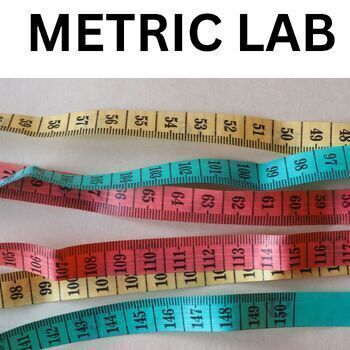Metric System (SI) Measuring Fun Activity Middle, High School Science
- Word Document File
Also included in
- These are fun activities that help your students to practice the skill of making accurate and precise measurements of length. In the unit, students will enjoy learning this very important skill. Perfect for the start of the year In the lessons, students will go outside and use the metric system toPrice $15.77Original Price $17.52Save $1.75
Description
Grade 8 STEM
This resource was created to help teachers review and teach the Metric system and density. It is a classic lab highly recommended for the start of the school year. Students will be engaged and learn how to use the Metric System
This product contains
1. Fun no prep lab
2. 10 Metric problems
3. Answer Key
MATERIALS
Ruler
10 index cards
Balance
Graduate cylinder
Rubber stopper
Water
The metric system is a decimal system based on the meter, liter, and gram as units of length, capacity, and weight or mass. The system was first proposed by the French astronomer and mathematician Gabriel Mouton (1618–94) in 1670 and was standardized in France under the Republican government in the 1790s. Unlike the English system which has multiple units for length (inch, foot, yard, mile), the metric only has one – the meter (m). Similarly, there are four basic metric units: ● Length – meter (m) ● Mass – gram (g) ● Volume – liter (l or L) ● Time – second (s) Base unit values can be modified (made larger or smaller) through the use of prefixes (ex. kilo, 1000; hecto, 100; deka, 10; deci, 0.1; centi, 0.01; milli, 0.001).






